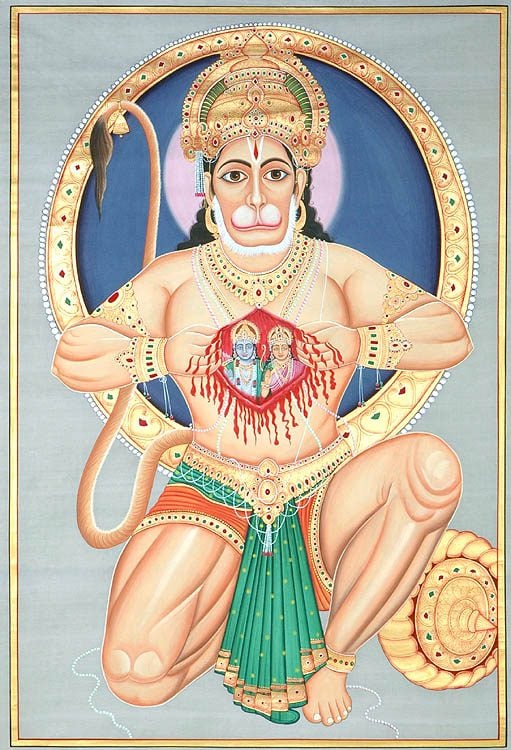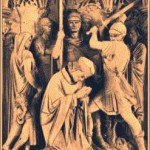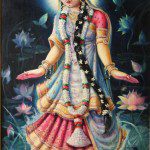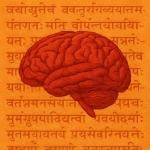In America, even though it is not technically a “Christian nation,” Christian stories and mythos underlie a lot of the culture. There are references to Biblical stories or sayings that are so ubiquitous you might not even realize that’s where they’re from! Once you start moving in Hindu circles, you will find that there are stories and references that are used as short-hand. Stories that are so universally known that they are used all the time for reference or metaphor.
The Churning of the Ocean
I’ve told this story here before. It comes up a lot because it involves a variety of Gods and a metaphorically significant story.
The very basic story is that the Devas (sometimes translated as Gods) and the Asuras (sometimes translated as demons) heard that they could gain the nectar of immortality if they churned the great ocean of milk. They used a giant serpent and a mountain to churn and uncovered many things (sort of like Pandora’s box). In some versions an avatar of Vishnu stabilizes the mountain they are using to churn. During the churning one thing that is released is a poison that would destroy the world. Shiva rushes in and sucks the poison into his mouth and his wife Parvati runs over to hold his throat and preventing the poison from going down into his stomach, giving him a blue throat. In the end the Asuras are tricked by Vishnu out of getting the nectar. In some versions Brahma is guiding this process (and is the one who told the Devas and Asuras that they could get the nectar in this way)
Here are several detailed tellings:
- Saivism.net
- http://vedicstoriesofindia.blogspot.com/2010/10/churning-milk-ocean.html
- http://vedicstoriesofindia.blogspot.com/2010/10/mohini.html
- Indian Story Time
- Wikipedia
The Birth of Ganesha
The basic story is that Parvati was lonely while her husband Shiva was away (he was often practicing asceticism in the mountains and meditating for days at a time). She made a child for herself by fashioning him out of clay and breathing life into him. She set her new son to guard the door while she bathed and told him to let no one in.
When Shiva returned and tried to go to his wife, he was stopped by a little boy he had never seen before. Enraged when the child would not let him pass, he cut off the boy’s head.
Parvati saw her dead child and wept inconsolably until Shiva set out to fix the situation. The very first animal he came to, an elephant, he cut off its head and attached it to the body of the boy. He was brought back to life and became Ganesha, son of Parvati and Shiva.
Here are some other tellings, which reveal some more details:
- http://www.boldsky.com/yoga-spirituality/faith-mysticism/2012/birth-of-ganesha-elephant-god-030069.html
- http://www.amritapuri.org/3714/ganesha.aum
- http://www.informationcorner.com/ganeshstories.htm
- http://www.udaipurblog.com/ganesh-chaturthi-the-birth-of-lord-ganesh.html
- http://hinduism.about.com/od/lordganesha/a/ganesha.htm
Draupadi Disrobed/The Dice Game
The longest story ever told in the world is the ancient epic The Mahabharata. The famous scripture The Bhagavad Gita is one section from The Mahabharata. Other stories from its pages are also very significant for Hindus.
Perhaps the second most famous passage is the dice game.
Here the bad guys have invited the good guys to play a game of dice and wager items from their kingdom. The bad guys are cheating but they also know that the leader of the good guys, Yudhisthira, cannot resist a game of dice and so must keep playing even when it is clear he is losing everything.
He gambles away his kingdom, his riches, his property. Then he gambles away his four brothers one at a time. Then he stakes and loses even himself. His wife Draupadi (she was actually the wife of all five brothers, as another part of the story explains!) was not in the hall that day since she had her period and was in seclusion.
The bad guys point out that Yudhisthira has one thing left to gamble and offer a double or nothing deal where he can win back everything if he stakes her. He does so and loses again.
The situation seems final. One of the bad guys, Dushasana, goes to Draupadi and insists she come to the hall. She refuses to be seen in her state of unclean-ness. So Dushasana grabs Draupadi by the hair and drags her into the hall.
She is disgusted that no one stands up for her honor. Her husbands are silent. The king presiding over the match is silent.
The bad guys tell the brothers and Draupadi to disrobe as they are no more than slaves now. Again, Draupadi refuses.
As Dushasana comes to tear her sari off, she prays to Sri Krishna and as Dushasana pulls, the cloth just keeps coming and coming and coming, never ending and never exposing Draupadi. He finally stops trying when there is a pile of cloth as high as the ceiling.
The king is very shaken by this miracle and offers Draupadi a favor. She asks that her husbands be free. When asked if she wants anything for herself she says no. She refuses to be greedy and says only “Save my husbands.”
Here are other tellings of the story:
- http://wmblake.com/stories/mahabharata/dicing.html
- http://www.indianmomsandbabies.com/preschooler/tales/indian/mahabharata/013.html
Krishna’s Love of Butter
Young Sri Krishna was an adorable handful. He was full of mischievousness and playfulness. There are certain things he is known for and so you can identify characters that are meant to reference him by those things. Teenage Krishna played the flute, but baby Krishna is most known for his love of butter.
Baby Krishna was always stealing the butter. His mother would try to hide it or put it somewhere he couldn’t reach, but it did no good. One of Krishna’s nicknames is “The Butter Thief.”
http://www.kidsgen.com/fables_and_fairytales/indian_mythology_stories/krishnas_love_for_butter.htm
http://www.iskconbangalore.org/krishna-butter-thief
Hanuman’s Devotion
Hanuman is the king of the monkeys and a loyal servant to Lord Rama. Hanuman helped Rama rescue Sita in The Ramayana. He is particularly known for his fierce devotion to God in the form of Rama.
He once said, “In the physical realm, Lord Rama is my master. In the subtle realm, Lord Rama is my friend. But in reality Lord Rama is myself.”
You’ll see lots of artwork showing the moment where Hanuman proves his devotion by tearing open his chest and revealing that Rama and Sita are literally in his heart.

What other stories might someone encounter and find referenced within Hinduism?











